When she graduated from the University of Regina’s School of Journalism in 2002, Michelle Brass had the world by the tail. She was landing her dream jobs, including one at CBC Radio as the host of The Afternoon Edition. Then, just as her young career was skyrocketing, she gave it all up in search of a truer existence rooted in her Saulteaux heritage.
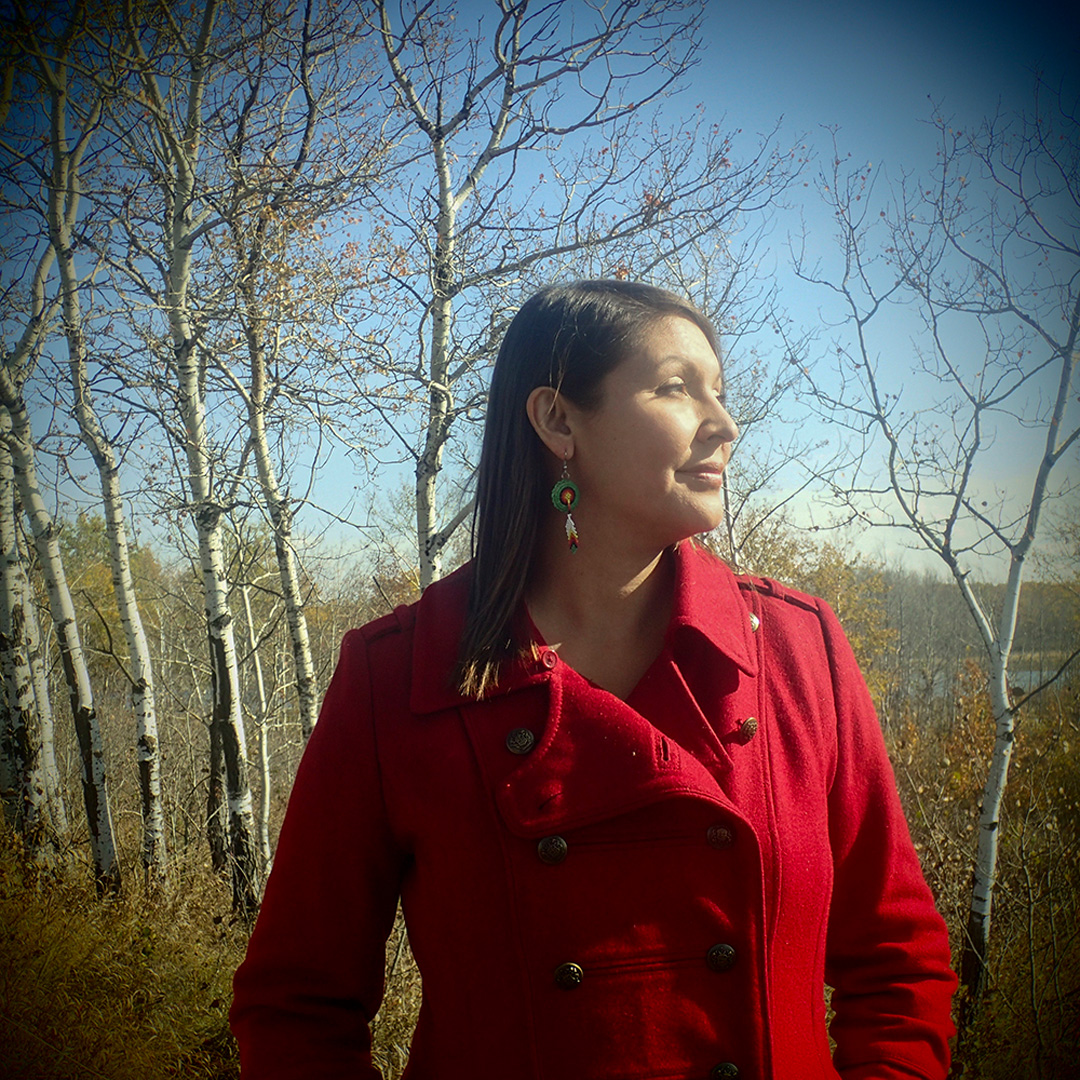
I ’ve always been driven by a strong sense of purpose. I vividly recall a moment from my childhood. I’m seven years old, staring at the side of my hand where my brown skin meets the lighter, paler skin of my palm. As I stare at the line where brown meets white, I am struck with a deep knowing, an understanding that I am both Indigenous and non-Indigenous, and that this is somehow significant. It’s one of my most powerful memories. It has defined the trajectory of my life.
"This deep longing to remember who I am is my spirit calling to me. It’s the spark, a fire lit within. Sometimes the blaze is strong and bright. Other times it’s an ember, a tiny point of light in the vast darkness. It never goes out."
Growing up, I struggled with my identity. My ancestry is mixed: Saulteaux on my mom’s side and English/Swiss on my dad’s side. Although I had deeper relationships with my extended family on my dad’s side, I have always felt a much stronger connection to my Saulteaux heritage.
I didn’t grow up with my culture or language. More than one hundred years of racist government policies aimed at assimilation made sure of that. During the residential school era, they tried to “kill the Indian in the child.” But they couldn’t, despite Canada’s best efforts. They could dim the flame, but could not extinguish the spark. That spark is our spirit. It is our blood memory. It is strong and it will always call us home.
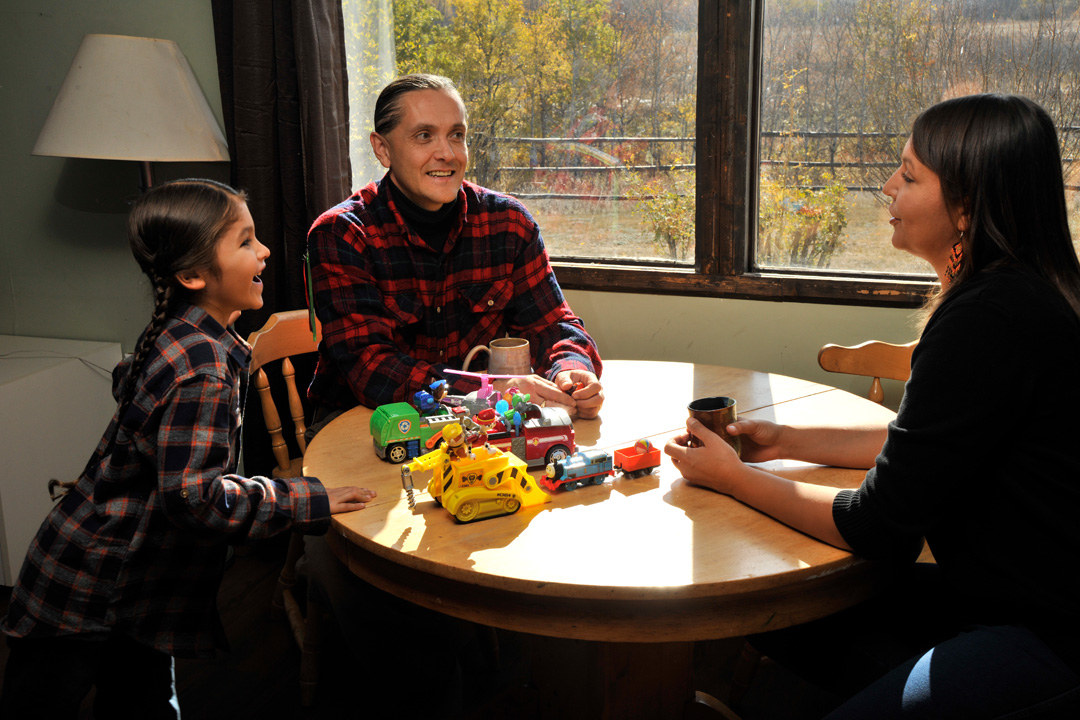
I’ve spent my life hearing that call. This deep longing to remember who I am is my spirit calling to me. It’s the spark, a fire lit within. Sometimes the blaze is strong and bright. Other times it’s an ember, a tiny point of light in the vast darkness. It never goes out. It’s the driving force behind everything I do. It guides me along a particular life path that’s been both a blessing and a burden.
I experience the deep fulfillment and joy of reconnecting to Indigenous ceremonies and teachings. I also engage with emotionally exhausting work that’s created the most anguish in my life; searching for a way to reconcile two completely different cultures inhabiting the same space, both figuratively and literally. My inner world and the outer world reflect the same struggle – Indigenous and non-Indigenous worldviews attempting, but failing, to live harmoniously. This dichotomy, and searching for a way to reconcile the two, has essentially become my life’s work, for better or for worse.
"I didn’t realize it at the time, but the pain I was experiencing was a very deep, profound grief over everything that has been taken from our people. I was grieving for something I never had the chance to have. But my spirit remembered and was crying out for me to recall, reconnect and reclaim our traditional ways of living."
This calling is what drove me to pursue a journalism career at 17. I believed if Canadians understood our shared history and Indigenous perspectives, we could create a stronger future. I had grand notions of building bridges between Indigenous and non-Indigenous people and healing this damaged relationship through storytelling.
My passion and purpose, my fire, propelled me forward. I completed the Indian Communication Arts program at the Saskatchewan Indian Federated College and graduated with distinction from the School of Journalism in 2002. I landed the internships of my choice and won competitive scholarships, including two major student awards from the Radio and Television News Directors Association. They are among the top national awards in the industry. I was offered jobs immediately upon graduation. The spark within me was ablaze. I was young, idealistic and ambitious.
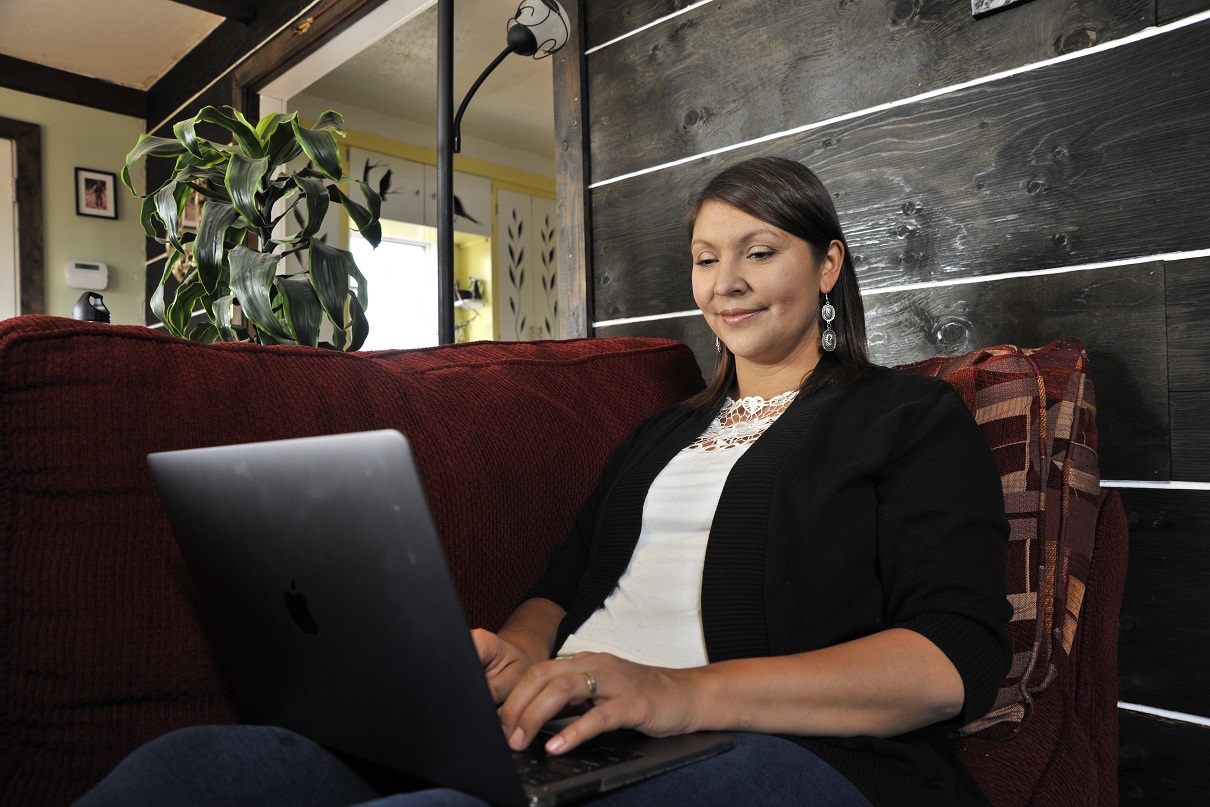
Over the next decade, I built my career and landed my dream jobs. I was a TV and radio reporter for CBC Saskatchewan. I did corporate communications for the City of Regina and the Federation of Sovereign Indigenous Nations. I was recruited as editor of Shout, a glossy, monthly magazine for Indigenous youth across the province. I landed my own provincial talk show on CJME NewsTalk Radio. I wrote a monthly column for the Saskatoon StarPhoenix and Regina Leader-Post. I was host of The Afternoon Edition on CBC Radio in Saskatchewan. All of my dreams had come true.
Except they really hadn’t.
Behind my career success, I experienced incredible emotional and spiritual pain due to unresolved intergenerational trauma. The weight of my anguish was crushing me and nothing seemed to help. Deep down, I knew my healing would come from my culture and ceremony. I yearned and searched for my cultural teachings. I learned bits and pieces here and there but, without family connections to my culture, I hit a lot of dead ends.
I didn’t realize it at the time, but the pain I was experiencing was a very deep, profound grief over everything that has been taken from our people. I was grieving for something I never had the chance to have. But my spirit remembered and was crying out for me to recall, reconnect and reclaim our traditional ways of living.
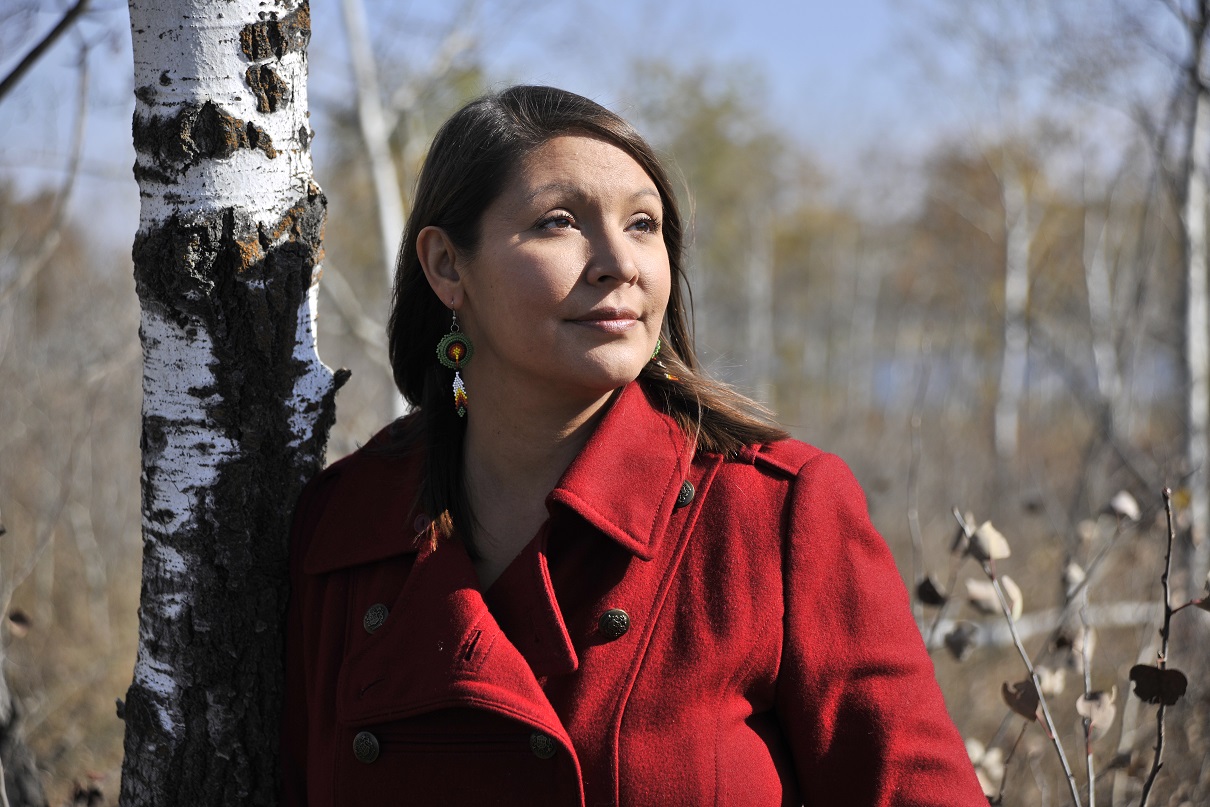
Some people say we lost our culture, language and way of life. My journalism career taught me the importance of language and word selection. We didn’t lose our culture as though we were careless. That’s like saying we lost our keys. Our entire way of life — everything — was maliciously stolen from us. It’s important to say that, to tell the truth. If the idea of reconciliation is to be a real possibility (and I’m not at all convinced that it is, at least not in my lifetime), we must start by telling the truth of what happened and continues to happen on these lands.
This desire to tell the truth and begin healing this relationship is what inspired me to pursue journalism over other professions. Throughout my career, I maintained a deep commitment to covering Indigenous stories in a fair and accurate manner and to covering all stories with integrity and excellence. I’d like to think I made a difference through my news stories, interviews and writing. I poured my heart and soul into this work to help build a stronger future for all of us.
"So just like that, I quit my career. My passion and purpose were gone. Without it, the work felt hollow and meaningless."
But one day, out of the blue, it all felt like a total waste of my time and energy. I was spending my life inside a newsroom feeding a never-ending news cycle instead of doing the real work of picking up the pieces of our culture that our parents, grandparents and great-grandparents left behind. Suddenly everything felt futile and silly. I couldn’t stand the newsroom, the on-air banter and five-minute interviews. Even more, I couldn’t stand having to continually educate my colleagues about Indigenous-Canadian facts and history, battling ridiculous stereotypes and reading racist comments on online news stories. I was completely done with it all.
So just like that, I quit my career. My passion and purpose were gone. Without it, the work felt hollow and meaningless. Not only was I done with journalism, I wanted nothing to do with building bridges between Indigenous and non-Indigenous people. I was done with that too. My flame had been snuffed out.
It’s taken me eight years to realize the fire is still there. An ember, burning steadily, guiding me and steering me in ways I didn’t understand or welcome at the time.
After leaving journalism, my husband and I moved to Peepeekisis Cree Nation. In the first year we spent a lot of time with wonderful Cree knowledge keepers attending ceremonies, picking medicines and learning teachings. Our son was born and we continued down this path, going to the lodges and learning and living by the teachings as best we could. We’re deeply committed to this way of life. Ceremonies and teachings set the foundation for everything we do.
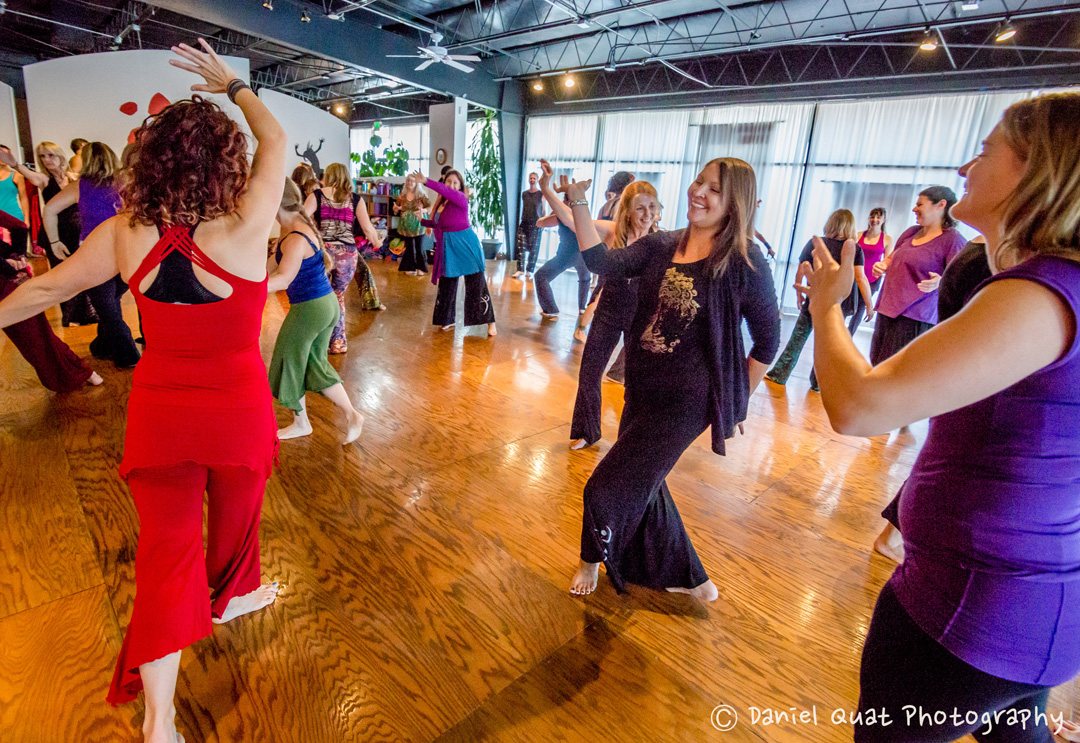
I also searched for a new career. I became an integrative nutrition health coach and took on some clients. I discovered JourneyDance, a therapeutic dance form that uses music, freestyle movement and imagery to release emotions and create healing in our lives. I completed three modules of intensive training to become a JourneyDance certified facilitator and began to lead classes and workshops. I also studied at the Martha Beck Institute for a year to become a life coach. These modalities, combined with Indigenous ceremonies as my foundation, started me on a path of deep healing. I wanted to share these tools with others on a similar path. Everything in my life was centred around holistic health, healing and living in a place of freedom and joy. I was excited to lead workshops and coaching programs to help people live lives full of purpose and meaning.
"It stoked the fire within and now it blazes red hot. My passion and purpose have returned. I stand, with my ancestors behind me, for the water, air, soil, animals, plants and our future with a fierce love and determination."
It was a wonderful period of transition, discovery and healing. Throughout this time, however, I couldn’t shake a sense of duty and responsibility to bring Indigenous and non-Indigenous people together. I tried repeatedly to let it go, but the idea wouldn’t let go of me. I didn’t want to work in the intersections of Indigenous and non-Indigenous anymore. But my lineage includes both the colonized and the colonizers, and so it seems the work I came here to do sits firmly within that realm.
It has become painfully clear to me that I can quit my career but I can’t quit my calling. The spark that drove me to succeed is still there, guiding me forward. It’s my ancestors calling me to do my part. As an Indigenous woman, I have a responsibility to my community, particularly to our children. We receive guidance in our lodges. We all have work to do. For me, that is accepting and honouring my identity and heritage by working with both Indigenous and non-Indigenous peoples to work out how we will share this space in a way that provides a good life for all.
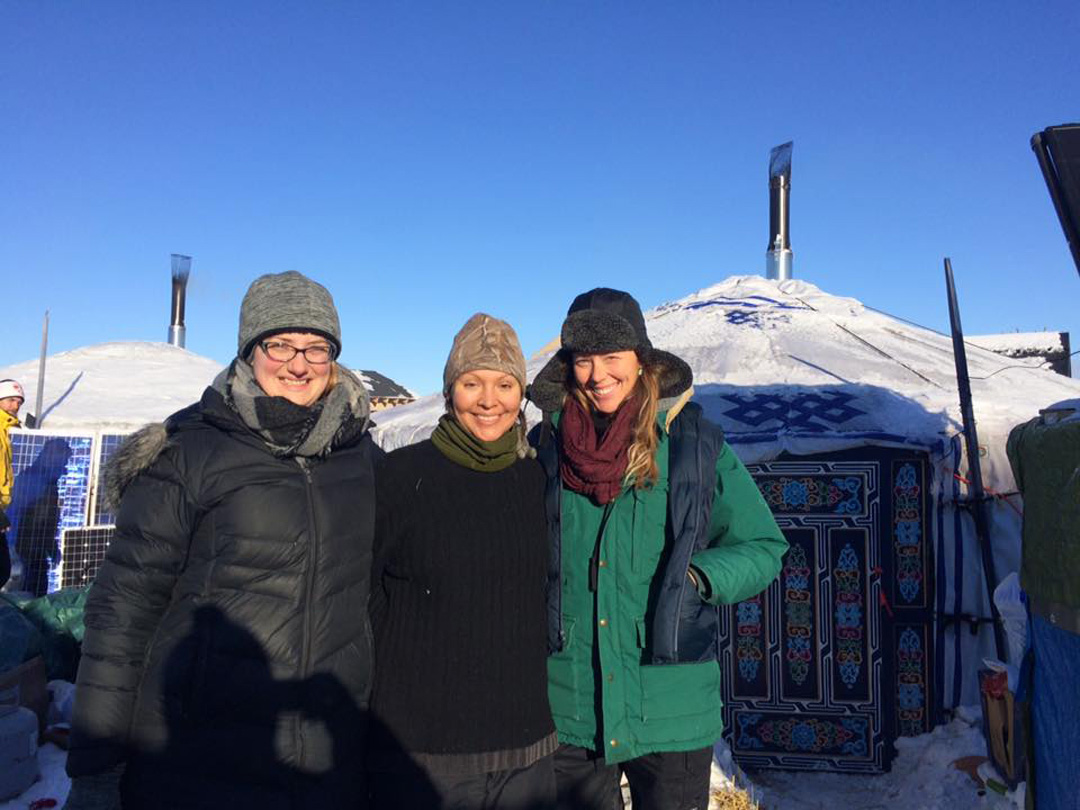
In December 2016, I went to Standing Rock for ten days to support our Lakota brothers and sisters protecting the water. I spent my time with the Indigenous midwives in the medic camp. We shared stories, songs and teachings with one another about the role of our women as we protect Mother Earth and live according to her natural laws. To say the experience was profound feels trite. It created a deep shift in me and brought everything in my life into sharp focus.
I left there with a renewed commitment to work for the Creator, to heed the guidance of the Grandmothers and Grandfathers (our spirit guides), to be in service to Mother Earth, women and future generations. It stoked the fire within and now it blazes red hot. My passion and purpose have returned. I stand, with my ancestors behind me, for the water, air, soil, animals, plants and our future with a fierce love and determination.
"My work is about developing my relationship with the land and understanding and respecting our natural laws. It’s about learning our languages, ceremonies, teachings and way of life. This is what will heal us. This is what will save us."
I’ve resisted for a very long time but I’ve finally found my way back to wanting to heal the relationship between Indigenous and non-Indigenous peoples. It’s different now. It’s evolved. Before, I focused on healing the past. Now, it’s about standing up for our future. We’ve been warned in our ceremonies about hard times coming. Climate change poses the greatest threat we’ve ever faced and will require extreme changes on a massive scale. We must work together. Traditional Indigenous knowledge is vital for the survival of our children and grandchildren. It always has been.
I no longer have any interest in trying to change colonial systems to improve the lives of Indigenous people. Instead, my focus is on strengthening our traditional knowledge systems and adhering to our ancient teachings. My work is about developing my relationship with the land and understanding and respecting our natural laws. It’s about learning our languages, ceremonies, teachings and way of life. This is what will heal us. This is what will save us.
For years, I’ve tried to walk in two worlds; to discover who I am and connect to my roots, while simultaneously achieving success in my career and western society. But I’ve come to realize we’re not meant to walk in two worlds. We’re meant to walk in one world. The real world. The world of grass and soil and land, the world of water and air and trees and plants. The world of the four-legged and the winged and water creatures. The world of relationships and kinship. The real, natural world where Mother Earth is calling for all of us to remember who we are and how to live with her and with one another.

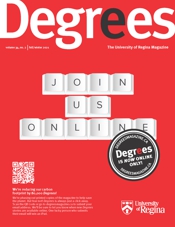

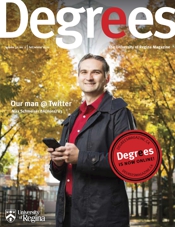


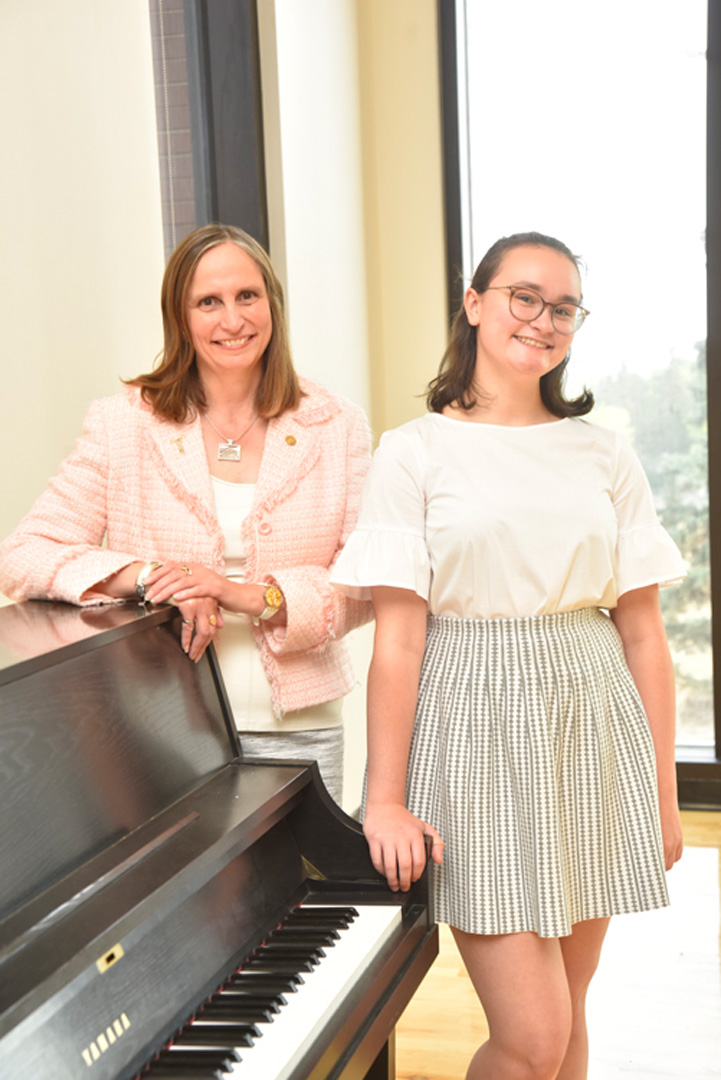 Representing four generations of Regina residents whose lives have been touched by College Avenue Campus are (left to right) Margaret Anne Hodges and daughter Alice Willett. The pair pose in the revitalized College Building in a classroom named for Hodges’ mother, Dr. Alice Goodfellow Hodges. (Photo by Rae Graham)
Representing four generations of Regina residents whose lives have been touched by College Avenue Campus are (left to right) Margaret Anne Hodges and daughter Alice Willett. The pair pose in the revitalized College Building in a classroom named for Hodges’ mother, Dr. Alice Goodfellow Hodges. (Photo by Rae Graham)
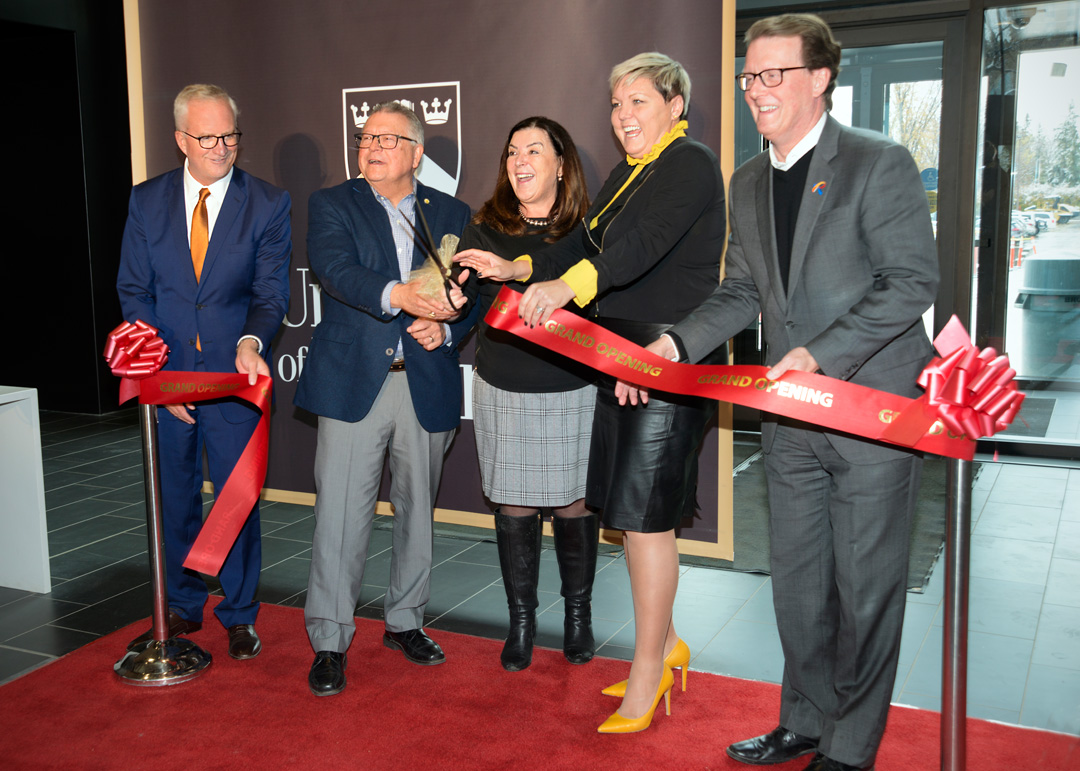 Ribbon cutting ceremony at the October 5 grand re-opening of the College Building (left to right) Dr. Thomas Chase, Provost and Vice-President (Academic); The Honourable Ralph Goodale, Minister of Public Safety and Emergency Preparedness; Dr. Vianne Timmons, President and Vice-Chancellor; Tina Beaudry-Mellor, Minister of Advanced Education; Mayor Michael Fougere. (Photo by Rae Graham)
Ribbon cutting ceremony at the October 5 grand re-opening of the College Building (left to right) Dr. Thomas Chase, Provost and Vice-President (Academic); The Honourable Ralph Goodale, Minister of Public Safety and Emergency Preparedness; Dr. Vianne Timmons, President and Vice-Chancellor; Tina Beaudry-Mellor, Minister of Advanced Education; Mayor Michael Fougere. (Photo by Rae Graham)
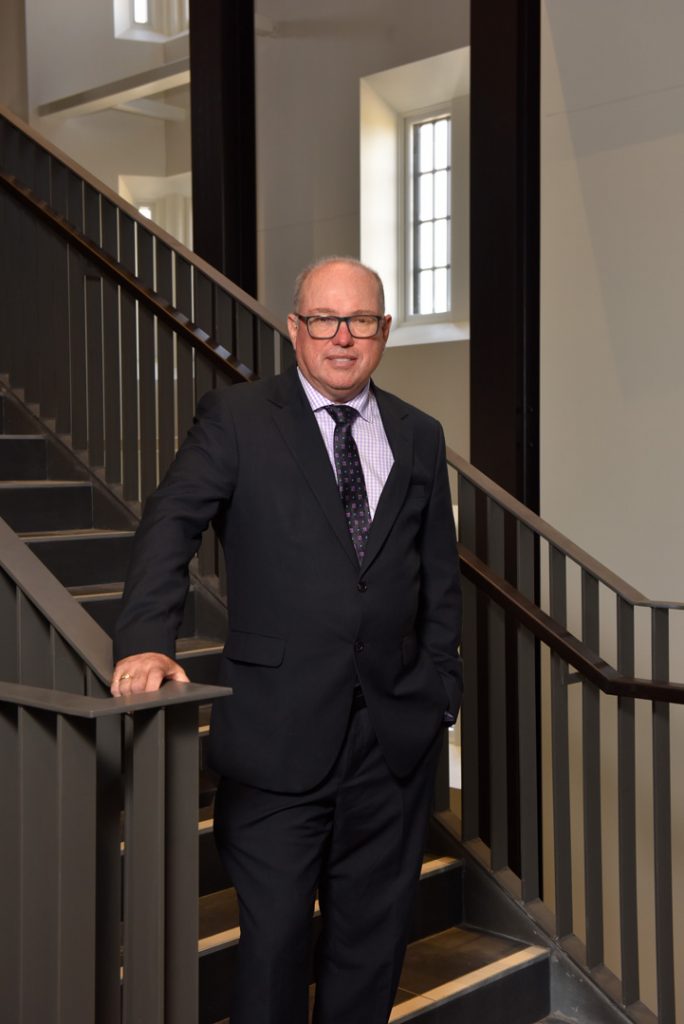 Doug Moen, interim executive director of Johnson Shoyama Graduate School of Public Policy one of Canada’s leading policy schools. (Photo by Trevor Hopkin)
Doug Moen, interim executive director of Johnson Shoyama Graduate School of Public Policy one of Canada’s leading policy schools. (Photo by Trevor Hopkin)
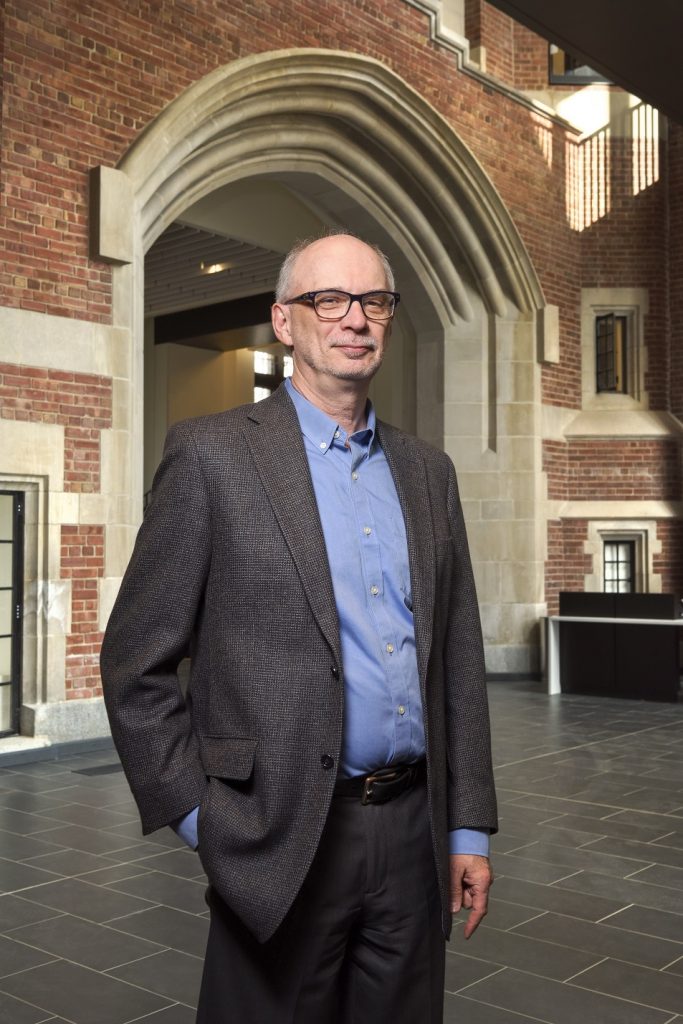 Harvey King, director of the Continuing Education Centre. (Photo by Trevor Hopkin)
Harvey King, director of the Continuing Education Centre. (Photo by Trevor Hopkin)
 Artist rendering of the Conexus atrium that will solve accessibility issues to a refurbished Darke Hall. (Artist rendering courtesy of P3Architecture Partnership)
Artist rendering of the Conexus atrium that will solve accessibility issues to a refurbished Darke Hall. (Artist rendering courtesy of P3Architecture Partnership)
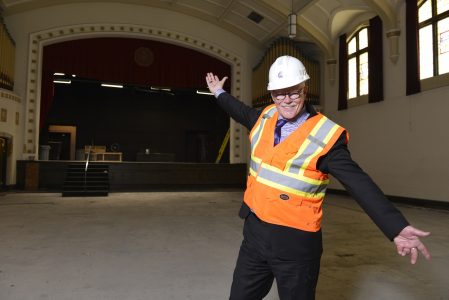 Donald Luxton, the head of Donald Luxton and Associates, Western Canada’s foremost cultural and historical management company and the consultant working on the University’s College Avenue Campus Renewal Project. Shown here inside Darke Hall. (Photo by Trevor Hopkin)
Donald Luxton, the head of Donald Luxton and Associates, Western Canada’s foremost cultural and historical management company and the consultant working on the University’s College Avenue Campus Renewal Project. Shown here inside Darke Hall. (Photo by Trevor Hopkin)